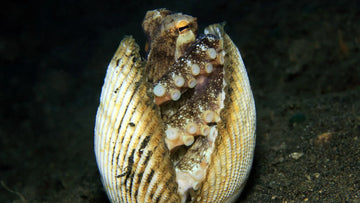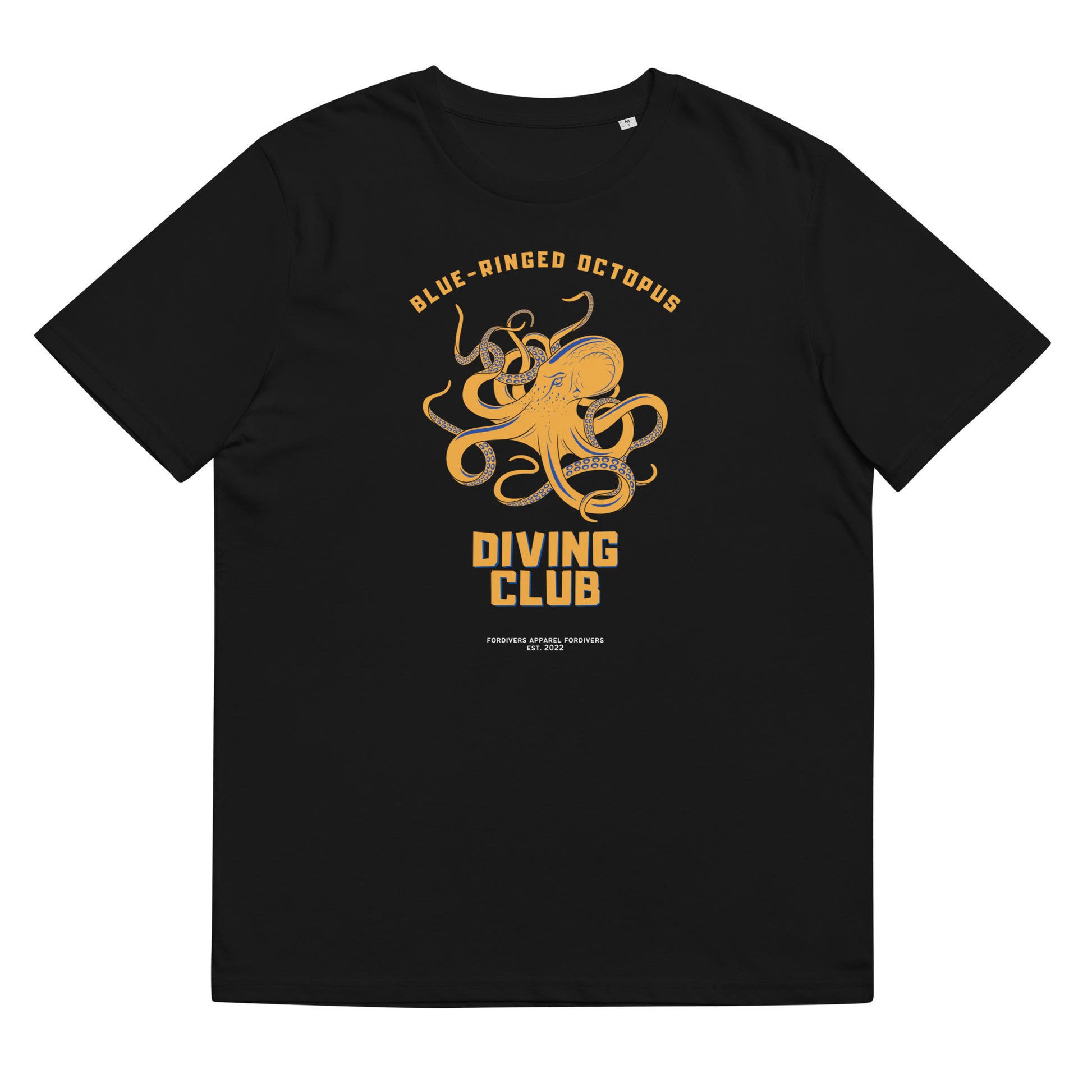Yes, it seems like alliteration. "Rare octopuses." Even rarer? These cephalopods have 8 arms, 3 hearts, blue blood, change color, shape, and texture... Even stranger than their own nature?
In this article, we will dive into the realm of the extraordinary to discover the 5 rarest and least-known octopus species. More extraordinary and surprising, both in terms of morphology and habits, than the common octopus. We look beyond the ordinary octopus to discover a series of amazing octopuses hidden in both the reef and the depths.
Dumbo Octopus (Grimpoteuthis)
The Dumbo octopus looks like it came out of a Disney illustrator's imagination. It's a hidden gem of the deep sea and can live up to 7,000 meters deep, making it the deepest-living octopod. As you can see in the following video, the marine biologist who named it the Dumbo octopus didn't take too many risks:
It has a series of adaptations to great depths that allow it to live in abyssal areas where there is no light, and if food glows, it's due to its absence, and the reflection of the bioluminescent capability of this octopus. Perhaps those ear-shaped fins serve to move in the depths with little energy expenditure in an area where finding food is a constant challenge.
Original Octopus T-Shirts - Worldwide Shipping!
SEE MORE T-SHIRTS FOR OCEAN LOVERSIt can be "found" (if you have a submarine capable of reaching these depths, of course) in various regions, from the Arctic seas to Antarctic waters, as well as in the Atlantic, Pacific, and Indian Oceans. These octopuses prefer habitats with soft substrates, such as seafloor sediments.
Mimic Octopus (Thaumoctopus mimicus)
The mimic octopus is a trickster. The Mortadelo of the marine world. It is a master of camouflage with an astonishing ability to imitate not only the appearance but also the behaviors of various marine species. From sea snakes to lionfish or flounders, this octopus demonstrates chameleon-like skill to imitate the shape of up to 12 animals, allowing it to avoid predators and capture prey. Its ability to change shape and color demonstrates intelligence far beyond what is imagined for an invertebrate.
The mimic octopus is found in the reefs of the eastern Pacific Ocean, specifically in the waters of Indonesia and Australia, in shallow waters up to depths between 3 and 20 meters. It prefers areas with sandy or muddy substrates, typical of muck diving, where it can use its chameleon-like ability to blend into the environment.
As you can imagine, due to its mimetic ability, the Thaumoctopus mimicus is an excellent hunter that feeds mainly on crustaceans and small fish, which it captures using its tentacles and finishes off with its sharp beak and venom. Yes, all octopuses inject venom.
As a curiosity, this unique ability of the Thaumoctopus mimicus was not documented until the 1990s.
Coconut Octopus (Amphioctopus marginatus)
If the mimic octopus stands out for its imitating ability, the coconut octopus is no slouch when it comes to intelligence. This octopus has a curious ability to use improvised tools found on the seafloor to protect itself and go unnoticed. What makes this octopus surprisingly clever is its ability to use anything from coconuts and bivalve shells to trash as a temporary home.
The coconut octopus, native to the waters of the Indo-Pacific region, can be found in areas such as Indonesia, the Philippines, and parts of Papua New Guinea. It prefers shallow waters, like the mimic octopus, and sandy volcanic bottoms where it can remain inconspicuous. The Amphioctopus marginatus's diet is not very different from its habitat companion. It primarily eats small crustaceans, shrimp, and small fish, which it captures at night using its arms and employs its beak to open shells and access the meat.
Blue-ringed Octopus (Hapalochlaena)
This octopus doesn't stand out for its intelligence. Rather, it's known for its immense power despite its small size. The blue-ringed octopus, belonging to the genus Hapalochlaena, measures only 12 to 20 centimeters, but is one of the most venomous animals on the planet. Its saliva contains paralyzing toxins that can be lethal to humans. We've already mentioned that all octopuses have some amount of venom, but this octopus is undoubtedly the king in this aspect. And not only does it inject venom when it stabs with its beak, but it's capable of releasing the venom into the water around its prey, paralyzing it before capturing it with its arms.
Another feature that makes the blue-ringed octopus special and earns it a place on our list is the spectacular way it warns its prey that it is a very dangerous creature. Cwhen threatened, the blue-ringed octopus raises its arms and displays its celebrated bright and flickering blue rings as a warning signal.
The blue-ringed octopus is mainly found in the tropical and subtropical waters of the Indian Ocean and the Pacific Ocean, including regions such as Indonesia, Australia, Japan, and the Philippines.
Blanket Octopus (Tremoctopus violaceus)
The blanket octopus genus, Tremoctopus, consists of four species of blanket octopus with two rather curious characteristics. On one hand, sexual dimorphism is incredibly exaggerated in this species. While females can grow up to approximately 1 meter in length and have a mantle length of up to 250 mm, males are less than 3 cm in size with a mantle length of less than 15 mm. Females weigh around 10 kg, while males only weigh 30 g!
Another special feature is the mantle that gives them their name and a place on the list. The mantle is the most iconic and evident feature of this species, as we can see in this video.
This mantle, a skin that connects the long dorsal arms, is mainly used by the octopus when it detects a threat. It unfolds the mantle, trying to appear larger and more threatening, attempting to ward off predators.
The exact lifespan of blanket octopuses is not known, but it is believed that the blanket octopus lives up to a maximum of 2 years for males and up to 5 years for females.
Blanket octopuses can be found in tropical and subtropical waters, including the Pacific, Indian, and Atlantic Oceans, the Gulf of Mexico, the Caribbean Sea, and even the Mediterranean Sea. It is a pelagic octopus that may seem abyssal, but is found in shallow coastal waters, with daily vertical migrations from 0 to 250 m.
Lastly, a small detail that shows the intelligence of octopuses is that both small males and females up to 70 mm carry fragments of tentacles from the Portuguese Man o' War, held in the first two rows of arms, which can serve as both a defense mechanism and a method for capturing food.























